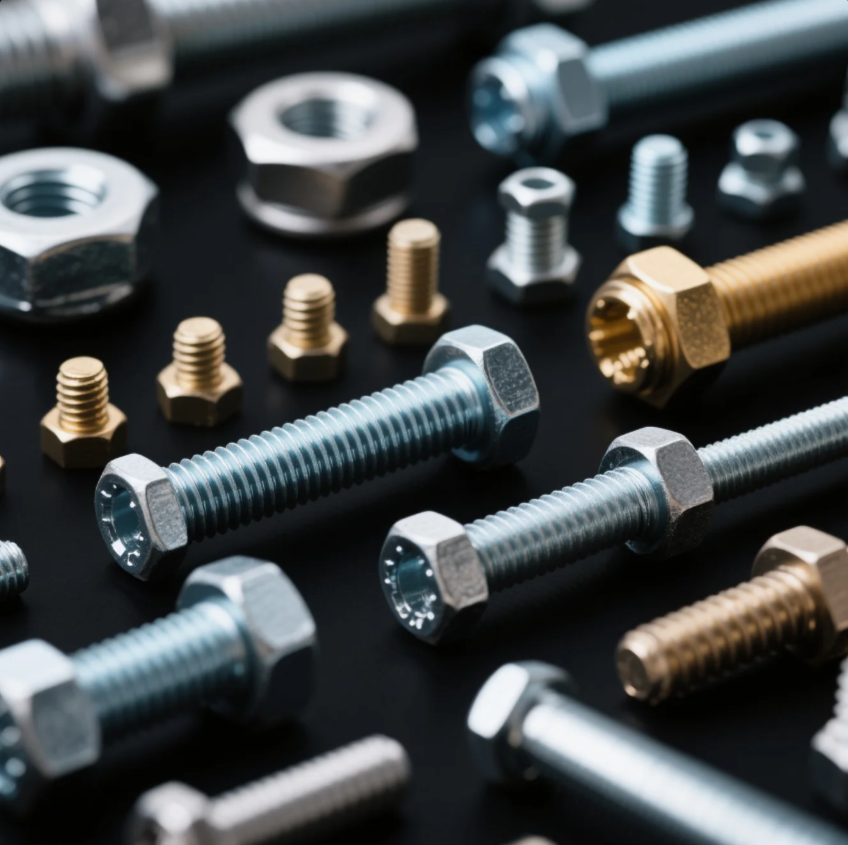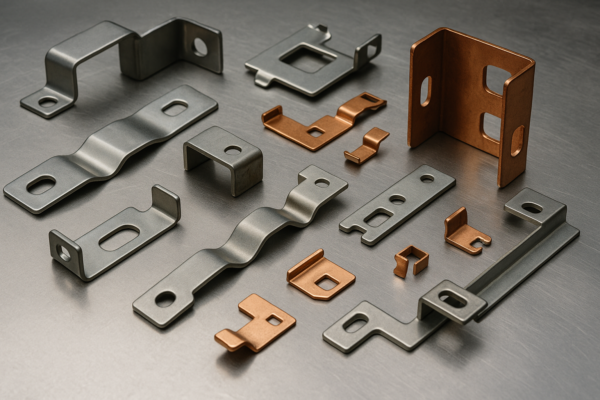What are three types of automotive fasteners?

Automotive fasteners are critical components used to secure various parts of a vehicle. These fasteners play an essential role in holding together parts of the car’s structure, engine, interior, and other vital components, ensuring safety and reliability.
In this article, we’ll explore the three types of automotive fasteners and their common applications in today’s vehicles.
Keep reading to learn about the essential fasteners used in automotive manufacturing and repair.
What are the three types of fasteners?
The three main types of fasteners commonly used in automotive applications are screws, bolts, and rivets. Each type serves a specific function depending on the requirements of the parts being secured, from lightweight interior components to heavy-duty engine components.
Snippet paragraph: The three most common types of fasteners in automotive applications are screws, bolts, and rivets, each used for different purposes in vehicle assembly and maintenance.

Dive-Deeper on the Three Types of Automotive Fasteners
-
Screws: Screws are threaded fasteners used in various automotive applications, from securing trim panels and upholstery to fastening mechanical parts. They come in various sizes, shapes, and materials, making them versatile for use in multiple areas.
-
Bolts: Bolts are used in heavy-duty applications and are typically paired with nuts to secure parts together. Bolts are often used in engine assembly, suspension systems, and other structural components that require strong and durable connections.
-
Rivets: Rivets are permanent fasteners used to join materials, particularly in body panels and structural parts. Rivets are commonly found in automotive manufacturing, especially for securing sheet metal, where welding or other fasteners might not be ideal.
These three types of fasteners are crucial in various areas of automotive construction, from engines and suspension systems to body panels and interiors.
What are automotive fasteners?
Automotive fasteners are specialized hardware components used to secure and join different parts of a vehicle. These fasteners are designed to withstand the vibrations, stresses, and extreme conditions that vehicles experience during operation. Automotive fasteners include screws, bolts, nuts, washers, clips, and rivets, each serving a different purpose.
Snippet paragraph: Automotive fasteners, such as screws, bolts, nuts, and rivets, are designed to securely attach various vehicle components, ensuring stability and safety under harsh conditions.

Dive-Deeper on Automotive Fasteners
-
Screws and Bolts: Screws and bolts are the most commonly used fasteners in automotive manufacturing. They are used for securing parts like engine components, seats, and body panels. Their strength ensures the stability of parts under high stress and vibrations.
-
Nuts and Washers: Nuts are paired with bolts to provide a secure fastening system, while washers are used to distribute pressure and prevent damage to surfaces. Both are essential for assembling parts like suspension systems and engine components.
-
Rivets: Rivets are commonly used in sheet metal applications to join body panels together. They are used in areas where a permanent connection is needed, providing strength and resistance to forces like wind, vibration, and impact.
Automotive fasteners are engineered to handle the demands of the automotive environment, ensuring that parts stay securely in place while maintaining the vehicle’s performance and safety.
What are the 3 types of fasteners used to fix sheet metal?
The three most common fasteners used to fix sheet metal in automotive applications are rivets, screws, and self-clinching fasteners. These fasteners are designed to hold sheet metal components securely while offering ease of assembly and, in some cases, disassembly.
Snippet paragraph: The three most common fasteners used to fix sheet metal are rivets, screws, and self-clinching fasteners, each providing a secure and durable connection in automotive applications.

Dive-Deeper on Fasteners for Sheet Metal
-
Rivets: Rivets are the most common fastener for fixing sheet metal. They are used to join two or more pieces of metal together, creating a permanent bond. Rivets are widely used in automotive manufacturing, particularly for body panels and other metal components.
-
Screws: Screws can also be used to secure sheet metal, especially when adjustments or removals are necessary. They are commonly used in applications where future maintenance or disassembly is required.
-
Self-Clinching Fasteners: Self-clinching fasteners are inserted into sheet metal and then pressed to form a permanent attachment. These fasteners are often used in thin sheet metal because they eliminate the need for threads or nuts.
These fasteners provide secure and reliable connections for sheet metal components, which are essential for vehicle bodywork, engine components, and interior parts.
What is the most commonly used fastener used on today’s automobiles?
The most commonly used fastener in today’s automobiles is the screw. Screws are highly versatile, available in a range of sizes and types, and are used in a wide variety of applications throughout the vehicle, from securing trim panels to fastening mechanical parts in the engine.
Snippet paragraph: Screws are the most commonly used fastener in today’s automobiles due to their versatility, strength, and ability to securely fasten a wide variety of components in both interior and mechanical systems.

Dive-Deeper on the Use of Screws in Automotive Manufacturing
-
Interior Components: Screws are used extensively in the interior of the vehicle, securing components like seats, door panels, and trim. They provide a secure hold and allow for easy disassembly if repairs or adjustments are needed.
-
Engine and Mechanical Components: Screws are also used in the engine and mechanical systems of the vehicle. They are used to secure parts like the intake manifold, air filter housing, and various mechanical assemblies that require a tight, secure fit.
-
Exterior Panels: While rivets are often used for body panels, screws are used in areas like bumpers, headlights, and mirrors, where adjustments or removals may be required.
-
Customization: The ability to use screws in various sizes and materials makes them ideal for different parts of the vehicle. Screws are used in nearly every part of the automobile, from the engine to the body.
Screws’ versatility and ease of use make them the most common fastener in automotive manufacturing and repair.
Conclusion
In today’s automobiles, screws, bolts, and rivets are the most commonly used fasteners. These fasteners are essential for assembling and securing vehicle components, ensuring the vehicle’s safety, performance, and durability.
TEMPLATE_END







